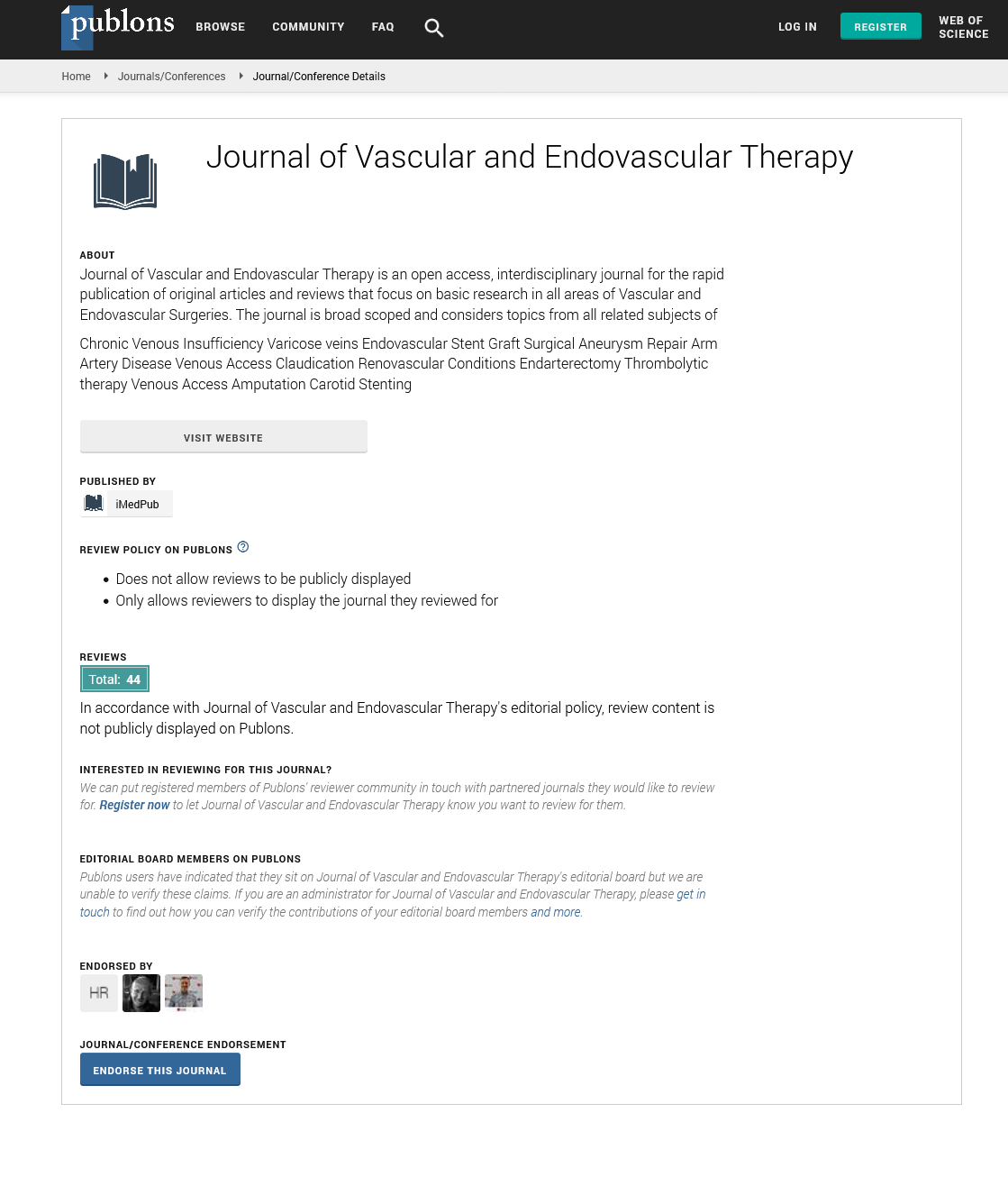Endovascular Treatment of Intracranial Aneurysms Associated with Arteriovenous Malformations.
3rd Edition of World Congress & Exhibition on Vascular Surgery
May 24-25, 2018 London, UK
Dmytro V. Shchehlov, Igor V. Bortnik, Oleg E. Svyrydyuk, Maryna Yu. Mamonova, Mykola B. Vyval
Scientific-Practical Center of Endovascular Neuroradiology NAMS of Ukraine, Kiev, Ukraine. O. O. Bogomolets National Medical University Kiev, Ukraine. Shupyk National Medical Academy of Postgraduate Education Kiev, Ukraine.
Posters & Accepted Abstracts: J Vasc Endovasc Therapy
DOI: 10.21767/2573-4482-C1-003
Abstract
Arteriovenous malformations (AVM) are frequently associated with cerebral aneurysms (AA), which increase the hemorrhage rate and associated with more unfavorable outcomes. In 91 (21.6%) patients from 421 cases of AVMs, we observed 67 (59,8 %) intranidal AA, 25 (22,3 %) flow-related AA of vessels supplying AVMs, 17 (15,2 %) AA of the circle of Willis origin of an artery supplying to AVM and 3 (2,7 %) AA of remote artery, that wasn’t involved to AVM supply. Endovascular treatment with coils, n-butylcyanoacrylate (NBCA), Onyx and Embolin was performed. 112 AA in 91 patients with AVMs were studied. Hemorrhage was happened in 63 patients (69,2 %), seizures in 24 (26,3 %), 4 (4,5 %) patients had other symptoms. 43 (68,2 %) hemorrhages were caused by AVM rupture with intranidal AA, 12 (19,1 %) – by rupture of AA of vessels supplying the AVMs, 7 (11,2 %) – AA of the circle of Willis origin of an artery supplying to the AVM, 1 (1,5 %) – remote AA that was not involved in the AVM supply. AAs were treated during AVM endovascular treatment. 21 AA were coiled and 82 flow-related and intranidal AA were embolized. 8 patients with AVM and 9 associated AA didn’t receive any treatment for AA, 2 of them with 3 AA died due to terminal coma after hemorrhage. 3 patients had fusiform AA (were left for observation), 1 patient had proximal flow-related Anterior Communicating Artery microaneurysm with complicated afferent vessels anatomy that was hard to occlude but it regressed after subtotal AVM treatment, 2 patients reject any surgery. All 91 patients had clinical follow-up from 1 month to 12 years. One (0,89 %) hemodynamically related AA regressed during follow-up, and none residual AA rupture during the follow-up. 5 patients with flow-related AA had AA de-novo. The main policy is to treat the symptomatic lesion firstly. AA researching during AVM evaluation should turn it in the therapeutic focus. The method of choice is the simultaneous AA and AVM occlusion. Occlusion of associated AA is critical.
Recent Publications 1. Elhammady MS, Aziz-Sultan MA, Heros RC. The management of cerebral arteriovenous malformations associated with aneurysms. World Neurosurg 2013;80:e123–29 2. Flores BC, Klinger DR, Rickert KL, et al. Management of intracranial aneurysms associated with arteriovenous malformations. Neuro- surg Focus 2014;37:E11 3. Gross BA, Du R. Natural history of cerebral arteriovenous malformations: a meta analysis. J Neurosurg 2013;118:437– 43 4. Mohr JP, Parides MK, StapfC, et al; International ARUBA investigators. Medical management with or without interventional therapy for unruptured brain arteriovenous malformations (ARUBA): a multicentre, non-blinded, randomised trial. Lancet 2014;383: 614 –21 5. Platz J, Berkefeld J, Singer OC, et al. Frequency, risk of hemorrhage and treatment considerations for cerebral arteriovenous malformations with associated aneurysms. Acta Neurochir (Wien) 2014; 156:2025–34 6. Rammos S.K., X B. Gardenghi, X C. Bortolotti, X H.J. Cloft, and X G. Lanzino Aneurysms Associated with Brain Arteriovenous Malformations AJNR 2016; 37: 19661971
Biography
Dmitry Scheglov has extensive experience in endovascular treatment of cerebral vascular pathology, in particular, aneurysms and malformations. Personal experience is more than 3000 operated patients with arterial aneurysms, arteriovenous malformations of the brain and spinal cord, ca rotid-cavernous fistulas, stenotic lesions of the head and neck arteries. In 2009 he defended his dissertation for the PhD in Medical Sciences - “Endovascular treatment of intracranial aneurysm in early hemorrhage periods complicated with angiospasm.” In 2014 - defended his thesis for the degree of Doctor of Medicine - “Diagnostics and endovascular treatment of intracranial arterial aneurysms.”. He is the author of more than 200 published
scientific works. His scientific activities linked to the development of endovascular neuroradiology in Ukraine. D. Scheglov was the first in Ukraine, who used stents and coils for cerebral aneurysm occlusion (2002) and first, who included liquid assets (including ONYX et al.) in treatment process of other cerebral vascular pathology (AVM).
Email:info@neuroradiology.org.ua
Google Scholar citation report
Citations : 177
Journal of Vascular and Endovascular Therapy received 177 citations as per Google Scholar report
Journal of Vascular and Endovascular Therapy peer review process verified at publons
Abstracted/Indexed in
- Google Scholar
- Publons
- Geneva Foundation for Medical Education and Research
- Secret Search Engine Labs
Open Access Journals
- Aquaculture & Veterinary Science
- Chemistry & Chemical Sciences
- Clinical Sciences
- Engineering
- General Science
- Genetics & Molecular Biology
- Health Care & Nursing
- Immunology & Microbiology
- Materials Science
- Mathematics & Physics
- Medical Sciences
- Neurology & Psychiatry
- Oncology & Cancer Science
- Pharmaceutical Sciences


